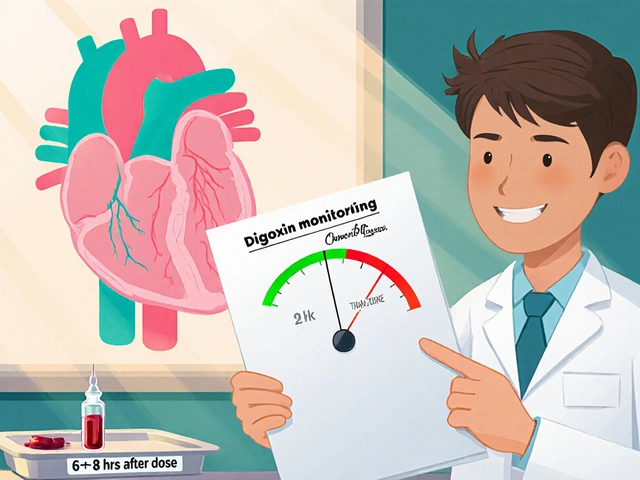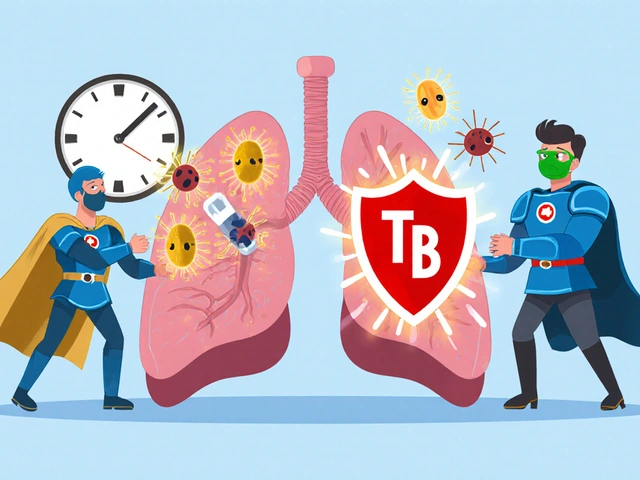You want clean energy and sharp focus without the jitters or the afternoon crash. Caffeine delivers, but tolerance creeps in fast. Theacrine promises smoother, longer-lasting alertness with less adaptation. So which one actually wins for work, study, training, or long shifts?
Here’s the short answer you came for-and the realistic trade-offs you’ll feel in real life.
- theacrine vs caffeine in one line: caffeine hits faster and harder; theacrine lasts longer with fewer jitters and less tolerance-but has a slower ramp and lighter peak.
- Caffeine is king for quick response time, power output, and short sprints of focus. Theacrine shines for sustained, calm energy over hours.
- Tolerance: caffeine builds in days; theacrine shows minimal tolerance in small human trials across 8-12 weeks.
- Safety: both are generally safe for healthy adults at standard doses; watch sleep timing. Theacrine’s long half-life means earlier cut-off.
- 2025 pick: choose caffeine for time-pressed tasks and workouts; choose theacrine for long study/work blocks or if you’re jitter-prone.
What Actually Happens in Your Brain: Theacrine vs Caffeine
Both molecules are purine alkaloids, cousins in structure. They block adenosine receptors (A1/A2A), which lifts the brake on alertness. From there, their paths diverge.
Caffeine: classic adenosine antagonist with downstream boosts to dopamine and norepinephrine signaling. It also inhibits phosphodiesterase modestly, nudging up cAMP. Translation: faster reaction time, more drive, and a noticeable kick within 20-40 minutes. Average half-life is 3-7 hours, but genetics change the story. Slow metabolizers (CYP1A2 variants) can feel wired much longer.
Theacrine: acts on adenosine pathways as well, but with a different binding profile and a stronger reputation for mood lift and calm focus. Human pharmacokinetics suggest a long half-life (about 16-26 hours in small studies), with a gentler onset-often 45-60 minutes. Users describe it as “steady, clean, and background,” not a spike.
Why that matters: onset and half-life shape how you use them. Caffeine excels when you need immediate performance. Theacrine fits deep work and long sessions. Because theacrine hangs around, timing is everything if you care about sleep.
What the research actually shows:
- Caffeine has decades of randomized trials showing better vigilance, reaction time, and endurance (3-6 mg/kg) with small but real strength gains. The evidence base is huge.
- Theacrine human data is smaller but consistent: studies on standardized theacrine (often branded TeaCrine) show increases in subjective energy and reduced fatigue without increases in heart rate or blood pressure at 150-300 mg. An 8-week study reported little to no tolerance buildup on repeated use.
- Synergy: combining theacrine with caffeine seems to preserve alertness while smoothing the edge. Some studies and many user reports back this up, though large independent trials are limited.
Key difference people feel: caffeine is a loud yes; theacrine is a quiet, steady yes.
How They Feel in Real Life: Onset, Duration, Side Effects, Tolerance
If you’ve tried both, you know they behave differently through a day. Here are the practical effects you’ll notice, mapped to common scenarios.
Onset and peak:
- Caffeine: kicks in fast (15-45 minutes), peaks around 60 minutes. Great for a 10 a.m. meeting or a pre-workout.
- Theacrine: slower onset (45-90 minutes), subtler peak. Best taken ahead of a long block where you want consistent focus.
Duration and smoothness:
- Caffeine: 3-5 hours of useful lift for most people, with a noticeable come-down if you overshoot the dose.
- Theacrine: 6-8+ hours of steady energy at 100-200 mg. Less of a “drop,” more of a fade.
Side effects profile:
- Caffeine: jitteriness, faster heart rate, anxiety in sensitive folks, and sleep disruption if taken late. GI upset happens for some people above ~200 mg.
- Theacrine: usually calmer. Studies up to 300 mg report minimal changes in blood pressure and heart rate. Still, the long half-life can quietly ruin sleep if taken mid‑afternoon.
Tolerance and dependence:
- Caffeine: tolerance builds within days. You often need more to hit the same effect by week two. Withdrawal is real-headache, fatigue, irritability.
- Theacrine: early human data (8-12 weeks) shows little measurable tolerance at standard doses. People report consistent effects day to day.
Performance specifics:
- Desk work and study: theacrine feels like mental “stamina.” Caffeine gives you urgency and faster task switching. Pairing both at low doses works well for long, varied workloads.
- Strength and cardio: caffeine still rules. Meta-analyses show clear benefits for time trial performance and small strength/power gains. Theacrine helps perceived energy and motivation, which can indirectly help workouts, but its performance data is lighter.
- Mood and motivation: both can improve mood. Theacrine’s mood lift feels calmer for many-useful if caffeine makes you edgy.
Sleep and timing:
- Caffeine: cut-off time for most people is at least 8 hours before bed. Slow metabolizers need 10-12 hours.
- Theacrine: because it lingers, treat it like a 10-12 hour cut-off minimum. Morning-only is best if you protect sleep.
| Factor | Caffeine | Theacrine |
|---|---|---|
| Typical single dose | 50-200 mg (3-6 mg/kg for performance) | 100-300 mg |
| Onset | 15-45 minutes | 45-90 minutes |
| Peak effect | ~60 minutes | ~90-120 minutes |
| Useful duration | 3-5 hours | 6-8+ hours |
| Half-life | 3-7 hours (genetics, meds, smoke status matter) | ~16-26 hours (small human studies) |
| Jitters/Anxiety risk | Higher, dose-dependent | Lower at standard doses |
| Blood pressure/heart rate | Small increases possible | Minimal changes in small trials up to 300 mg |
| Tolerance | Builds in days | Low across 8-12 weeks (limited data) |
| Crash | Common if overdosed | Uncommon; gentler fade |
| Price per dose (2025) | $0.03-$0.10 (200 mg tab) | $0.30-$0.80 (100-150 mg cap) |
| Natural sources | Coffee, tea, cocoa | Kucha tea (Camellia assamica var. kucha) |

Dosing, Stacking, and Safety: Do It Right in 2025
Use the lowest dose that gets the job done. Your future self (and your sleep) will thank you.
Practical dosing rules of thumb:
- Caffeine for daily use: 50-150 mg. For training or a big deadline: up to 200 mg, or 3-6 mg/kg for athletes. Most health agencies consider up to 400 mg/day safe for healthy adults; pregnancy limits are 200 mg/day.
- Theacrine: 100-200 mg once daily for steady focus. Some go to 300 mg, but start low and assess across a week.
- Cut-off times: caffeine at least 8 hours before bed; theacrine 10-12 hours before bed.
Smart stacks that work:
- Caffeine + L-theanine (2:1 theanine:caffeine): keeps the alertness, reduces jitters. For example, 100 mg caffeine + 200 mg theanine.
- Caffeine (50-100 mg) + theacrine (50-100 mg): smoother ramp and longer tail than caffeine alone. Keep totals modest to protect sleep.
- Theacrine + L-tyrosine (500-1000 mg): helpful when you need sustained mental effort under stress.
What to avoid:
- High-dose caffeine plus afternoon theacrine. The combo can stalk your sleep even if you “feel fine” at 8 p.m.
- Dry powders of either compound if you’re not experienced. Dosing errors happen. Use capsules or tablets with clear labeling.
- Daily maxing out your dose. Save higher doses for testing days or key workouts.
Safety snapshot (what the literature and guidelines say):
- Healthy adults: caffeine up to 400 mg/day is widely recognized as safe (EFSA 2015; US consensus statements). Single doses up to 200 mg are generally well tolerated.
- Theacrine: human trials up to 300 mg/day report no significant changes in heart rate or blood pressure and normal clinical labs over weeks. The database is smaller than caffeine’s, so treat it with the respect you’d give any new compound.
- Pregnancy and breastfeeding: stick to caffeine limits of 200 mg/day. Theacrine lacks robust safety data here-best to avoid unless your clinician says otherwise.
- Teens: keep both low or skip. Sleep and growth matter more than a sharper hour of focus.
- Medical conditions: if you have arrhythmias, uncontrolled hypertension, anxiety disorders, GERD, or liver disease, talk to your clinician first. Same if you’re on meds that affect CYP1A2 (for caffeine) or have stimulant warnings.
Metabolism and interactions you should know:
- Caffeine rides CYP1A2. Smoking speeds it up; some SSRIs and fluoroquinolone antibiotics slow it down. Hormonal contraceptives can lengthen caffeine half-life.
- Theacrine appears to have limited CYP involvement at typical doses and can be co‑ingested with caffeine without large PK shifts in small studies, but data is still maturing.
Tracking what works for you:
- Rate your focus, mood, and any jitters 0-10 one hour after dosing, then again at hour four. Adjust dose by 25-50 mg steps weekly.
- Wearable sleep data helps. If deep sleep dips or latency rises, move your dose earlier or lower it.
- Use caffeine breaks. A 7-10 day deload every 6-8 weeks brings responsiveness back. Theacrine may need this less often, but try a periodic off week.
Which One to Choose: Scenarios, Trade-offs, Alternatives
Here’s the no-BS guidance by situation, plus a simple decision path you can actually follow.
Best for / Not for:
- Caffeine - Best for: fast start, short intense tasks, workouts, driving when fatigued, test-taking when you slept enough. Not for: high anxiety days, very late sessions, fragile sleep.
- Theacrine - Best for: long study/work blocks, coding sprints, deep writing, marathon meetings, people who get jittery on caffeine. Not for: last‑minute kicks, late afternoon dosing if you care about sleep.
Decision tree (text version):
- Need energy in under 30 minutes? Choose caffeine (50-150 mg). If you’re jitter-prone, add 100-200 mg L-theanine.
- Need steady focus for 4-8 hours with minimal jitters? Choose theacrine (100-200 mg), taken 45-60 minutes before you start.
- Long day with mixed tasks? Try a combo: 50-75 mg caffeine + 75-100 mg theacrine early in the day.
- Protecting sleep at all costs? Use smaller doses and stick to morning only. If you still struggle, reduce dose or switch to non-stimulant options below.
Real-world scenarios:
- Early-morning workout: 150-200 mg caffeine 30-45 min pre-lift. If you hate the crash, add 50-75 mg theacrine.
- All‑day offsite or conference: 100 mg theacrine with breakfast. If you lag before lunch, 50 mg caffeine + 100 mg L-theanine.
- Deep study day: 100-150 mg theacrine at 8 a.m., a light 50-75 mg caffeine at 9 a.m. Stop by noon.
- Long drive: 100 mg caffeine at start, another 50-100 mg 3 hours in if needed. Avoid theacrine late because of the long tail.
Common pitfalls to avoid:
- Taking theacrine after lunch. You won’t feel wired, but your sleep can silently suffer.
- Chasing more caffeine after it stops working due to tolerance. Take a deload week instead.
- Using both daily at high doses. Keep strategic. Rotate or reserve combos for big days.
Credible alternatives if neither feels right:
- L-theanine (200 mg): calmer attention without stimulation; great add‑on to coffee.
- Rhodiola rosea (200-400 mg standardized): may help fatigue and stress resilience; take early to avoid insomnia.
- Creatine monohydrate (3-5 g/day): small but real cognitive benefits under sleep deprivation and mental fatigue; zero stimulant effects.
- Power naps (10-20 min): still undefeated for mid-day reset.
| Decision Criteria | Pick Caffeine | Pick Theacrine |
|---|---|---|
| Time to feel it | < 30 minutes | > 45 minutes |
| Duration needed | Up to 4 hours | 6-8+ hours |
| Jitter sensitivity | Low sensitivity | High sensitivity |
| Budget | Very low cost | Higher cost |
| Sleep protection | Stop 8+ hours pre‑bed | Stop 10-12 hours pre‑bed |
| Evidence depth | Extensive human RCTs | Growing but smaller |
Mini‑FAQ
Does theacrine build tolerance? Small human studies up to 8-12 weeks suggest little to no tolerance at standard doses. We need longer trials to be certain.
Can I swap theacrine for my afternoon coffee? If you care about sleep, probably not. The long half‑life means a morning dose is safer. If you want something afternoon, use herbal tea or theanine.
Is theacrine legal in sports? Yes, it’s not on the WADA Prohibited List as of 2025. Always check your federation’s latest rules.
What about blood pressure? Caffeine can nudge it up. Theacrine hasn’t shown meaningful changes up to 300 mg in small trials, but monitor if you have hypertension.
Can I take both daily? You can, but keep doses modest and morning‑only. Consider cycling caffeine every 6-8 weeks for a week to reset responsiveness.
Evidence at a glance
- Caffeine: decades of randomized trials show improved vigilance, reaction time, and endurance (sports science consensus; EFSA 2015 safety opinion for dosing).
- Theacrine: human studies (often with standardized TeaCrine) report increased energy and reduced fatigue at 150-300 mg without significant heart rate/BP changes; 8‑week studies suggest minimal tolerance. Pharmacokinetic studies show a long half-life (~19 hours).
Next steps and troubleshooting
- If caffeine makes you anxious: switch to theacrine 100 mg + L‑theanine 200 mg in the morning. Track anxiety and sleep for a week.
- If you crash on caffeine: try 50-75 mg caffeine + 75-100 mg theacrine at 8-9 a.m. Do not redose late.
- If you don’t feel theacrine: increase by 25-50 mg, but give it a full hour. If nothing after a week, it may not be your molecule.
- If sleep tanks: move all dosing before 10 a.m. or cut theacrine entirely for a week and reassess.
- Athlete protocol: test caffeine at 3 mg/kg on a non‑competition day. If jitters, add 200 mg theanine or swap 25-50 mg of caffeine for 50-75 mg theacrine.
- Work/study rhythm: anchor a single morning dose (caffeine or theacrine), then rely on hydration, short walks, and light snacks-not more stimulants-to maintain energy.
Final pick, plain and simple: if you value fast, proven performance and don’t mind managing tolerance, caffeine stays on top. If you want longer, smoother focus with fewer jitters and better day‑to‑day consistency, theacrine takes the crown for your use case-especially in the morning. Many high performers keep both and use them intentionally.







Carmelita Smith
August 29, 2025 AT 22:30 PMBoth caffeine and theacrine have their spots, so pick based on how fast you need the boost 😊.
Liam Davis
September 3, 2025 AT 18:43 PMI appreciate the thorough breakdown; the pharmacokinetic differences are crucial, especially when planning multiple doses per day; note that caffeine’s half‑life can vary wildly due to CYP1A2 polymorphisms, whereas theacrine’s longer half‑life remains relatively stable. Also, the synergy data, while limited, suggests that low‑dose combinations might mitigate jitters without sacrificing alertness. Remember to monitor your sleep latency if you push the timing too late, and consider rotating off periods to reset tolerance. For athletes, the 3‑6 mg/kg caffeine window still shows the most consistent performance gains. Finally, keep an eye on blood pressure trends if you’re hypertensive; theacrine appears neutral in small trials, but individual responses vary.
Arlene January
September 8, 2025 AT 14:55 PMYo, if you’re chasing that hyper‑focused sprint, grab a quick caffeine hit, but if you need a marathon‑style grind, theacrine’s the silent workhorse. Keep the doses low, stay hydrated, and you’ll dodge the crash. Let’s crush those goals!
Kaitlyn Duran
September 13, 2025 AT 11:08 AMI love how theacrine stretches focus over a marathon work session, while caffeine spikes like a sprint.
Terri DeLuca-MacMahon
September 18, 2025 AT 07:21 AMAlright folks, let’s get real – theacrine is basically the chill sibling that shows up to the party early, sets the vibe, and stays till the lights go out 🌙. Caffeine? It’s the loud friend who bursts through the door, shouts the chorus, then disappears after the second verse. If you’re sensitive to jitters, start with low‑dose theacrine (100 mg) and watch the calm energy roll in, no heart‑racing drama. For those high‑intensity workouts, a quick caffeine blast (150 mg) still wins the sprint, especially when paired with L‑theanine to smooth the edge. Timing is everything – caffeine should clock out at least eight hours before bedtime, theacrine needs a ten‑to‑twelve hour window, otherwise you’ll pay with restless nights. Remember, stacking works but only when you respect the total caffeine‑equivalent load; over‑stack and you’ll feel the dreaded crash anyway. Also, budget talk: caffeine wins on price, theacrine costs a bit more but the consistency may be worth it for long‑haul focus. Bottom line: match the tool to the task, respect the half‑lives, and your brain will thank you. 💪🚀
gary kennemer
September 23, 2025 AT 03:33 AMBuilding on what Liam said, the interplay between adenosine antagonism and downstream catecholamine release explains why caffeine feels more "sharp" while theacrine feels smoother. In practice, I’ve found a morning combo of 50 mg caffeine plus 75 mg theacrine gives a balanced plateau without the mid‑day dip. Just keep the total caffeine‑equivalent under 200 mg to stay within safe limits.
Payton Haynes
September 27, 2025 AT 23:46 PMThe big pharma won’t tell you that theacrine is a hidden agenda to keep us wired forever.
Earlene Kalman
October 2, 2025 AT 19:58 PMHonestly the article glosses over the fact that theacrine’s research pool is tiny – you’re basically betting on anecdotal hype rather than solid data.
Brian Skehan
October 7, 2025 AT 16:11 PMPeople think they’re awake, but the real control is in the lab, not your kitchen counter. I’m telling you, those “natural” stimulants are part of a larger push to keep the population in a constant state of productivity, and the data is deliberately vague.
Andrew J. Zak
October 12, 2025 AT 12:24 PMWhile it’s easy to get caught up in alarmist narratives, the practical takeaway is simple: monitor how you feel, adjust dosage, and respect your own circadian rhythm. No need to over‑complicate the decision.
Dominique Watson
October 17, 2025 AT 08:36 AMIn our great nation we must champion proven, time‑tested substances. Caffeine, discovered by industrious pioneers, stands as a testament to our heritage, whereas theacrine remains a foreign curiosity lacking the noble pedigree of our historic libations.
Mia Michaelsen
October 22, 2025 AT 04:49 AMFrom a know‑it‑all perspective, the data clearly favors caffeine for acute performance metrics, yet theacrine’s longer half‑life offers benefits for extended cognitive endurance; both have their place depending on the user’s objective.
Kat Mudd
October 27, 2025 AT 00:02 AMThe article does a decent job of laying out the basics but it misses several critical points that seasoned users should be aware of. First, the dosage recommendations are overly simplistic and do not account for individual variability in metabolism, especially concerning CYP‑dependent pathways that affect caffeine clearance. Second, the long‑term safety data for theacrine is limited to short‑term studies, so assuming it is completely benign is premature. Third, the potential for synergistic effects when stacking with other stimulants such as yohimbine or modafinil is not discussed, and that could be a game‑changer for certain high‑performance scenarios. Fourth, the influence of diet, sleep quality, and stress levels on the subjective experience of both compounds is largely ignored, yet they play a massive role in perceived efficacy. Fifth, there is a lack of mention about the legal status of theacrine in various sports federations beyond the WADA list, which could be relevant for competitive athletes. Sixth, the article glosses over the fact that even low‑dose caffeine can cause increased cortisol production, which may have downstream health implications if used chronically. Seventh, user tolerance is not a linear process; some individuals develop cross‑tolerance between caffeine and theacrine due to overlapping receptor pathways. Eighth, the impact on sleep architecture, not just latency, is a notable omission – both compounds can alter REM cycles in subtle ways. Ninth, the economic cost analysis fails to consider price volatility in the supply chain for theacrine, which can make budgeting unpredictable for regular users. Tenth, the potential for gastrointestinal upset at higher caffeine doses is mentioned but not quantified, leaving readers without concrete guidance. Eleventh, the article does not address the role of other bioactive compounds in coffee or tea that may modulate the effects of caffeine, such as chlorogenic acids. Twelfth, there is no discussion of the influence of hormonal fluctuations, for example in menstrual cycles, on the response to these stimulants. Thirteenth, the piece could benefit from a more nuanced discussion of the psychophysiological mechanisms behind the so‑called "crash" phenomenon. Fourteenth, the risk of adulteration or poor‑quality supplements, especially in unregulated markets, is a serious concern that deserves coverage. Finally, the recommendation to choose based on personal preference is sound, but readers would benefit from a decision‑tree or flowchart to guide that choice more concretely. Overall, while the guide is a solid introduction, enhancing depth in these areas would greatly improve its utility for serious users.
Pradeep kumar
October 31, 2025 AT 20:14 PMExcellent deep‑dive, Kat. To add some technical nuance, the pharmacodynamic profile of theacrine shows a lower EC50 at A2A receptors, which may explain the smoother mood lift. When building a stack, I’d suggest a 1:1 ratio of caffeine to theacrine for a balanced ATP‑driven energy output, and supplement with 200 mg of L‑theanine to dampen any residual sympathetic surge. Using a micro‑dosing schedule (e.g., 25 mg caffeine + 25 mg theacrine every 3 hours) can maintain plasma concentration within the therapeutic window while minimizing tolerance buildup. For athletes, monitoring heart rate variability (HRV) pre‑ and post‑dose can provide objective feedback on autonomic balance.
James Waltrip
November 5, 2025 AT 16:27 PMOne must recognize that the prevailing discourse on stimulant usage is riddled with mediocrity; theacrine, despite its obscurity, offers a sophisticated modulation of the adenosine cascade that the pedestrian caffeine simply cannot match. Yet the pretentious elite must also acknowledge that without rigorous double‑blind trials, we are merely indulging in cerebral vanity. In short, blend wisely, but keep a skeptical eye on the hype.
Chinwendu Managwu
November 10, 2025 AT 12:39 PMNice attempt at depth, James, but let’s not pretend that stacking a mystery molecule will magically make us superhuman. The reality is far less dramatic.
Kevin Napier
November 15, 2025 AT 08:52 AMHey team, remember that the best protocol is the one you can stick to. Start low, track how you feel, and adjust. Consistency beats fancy stacks any day.
Sherine Mary
November 20, 2025 AT 05:05 AMWhile your enthusiasm is admirable, the oversimplified "just start low" advice ignores the nuanced interplay of genetics, lifestyle, and neurochemistry that truly determines efficacy.
Monika Kosa
November 25, 2025 AT 01:17 AMAll this talk about safety feels like a smokescreen – the real question is who’s really benefiting from keeping the masses jittery?
Gail Hooks
November 29, 2025 AT 21:30 PM🤔 The deeper we look, the more we see that personal experience plus thoughtful monitoring beats any generic chart. 🌟 Stay curious and keep testing what works for you.